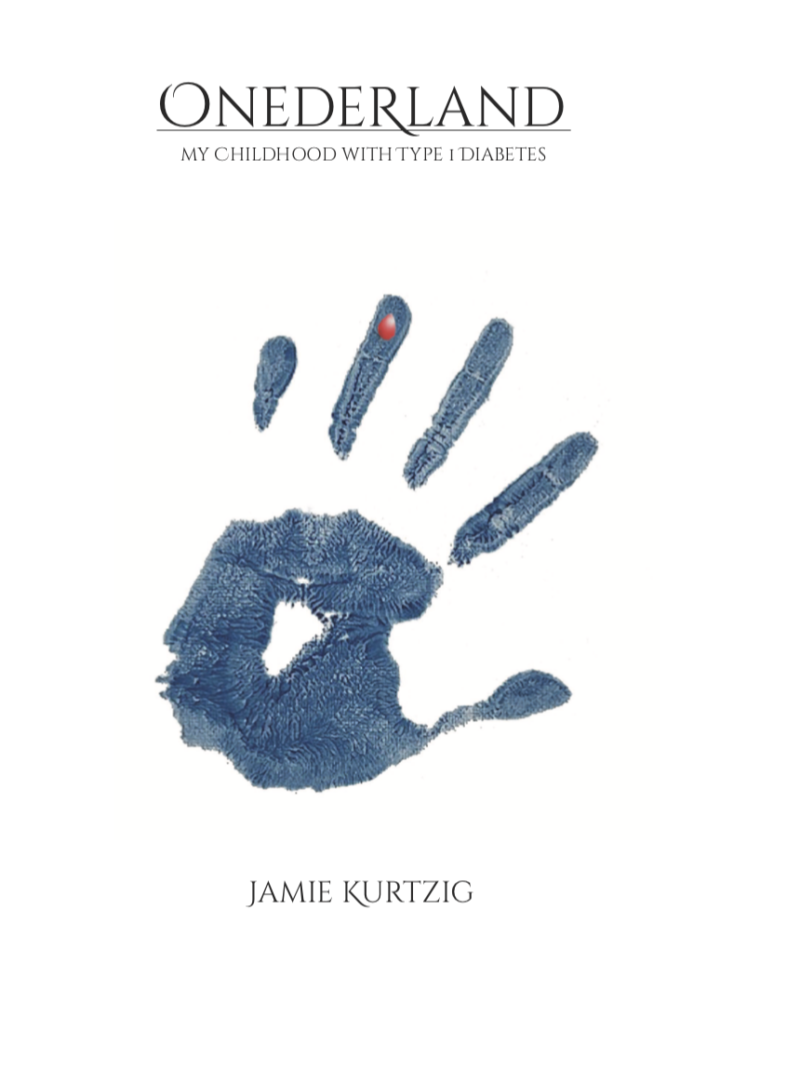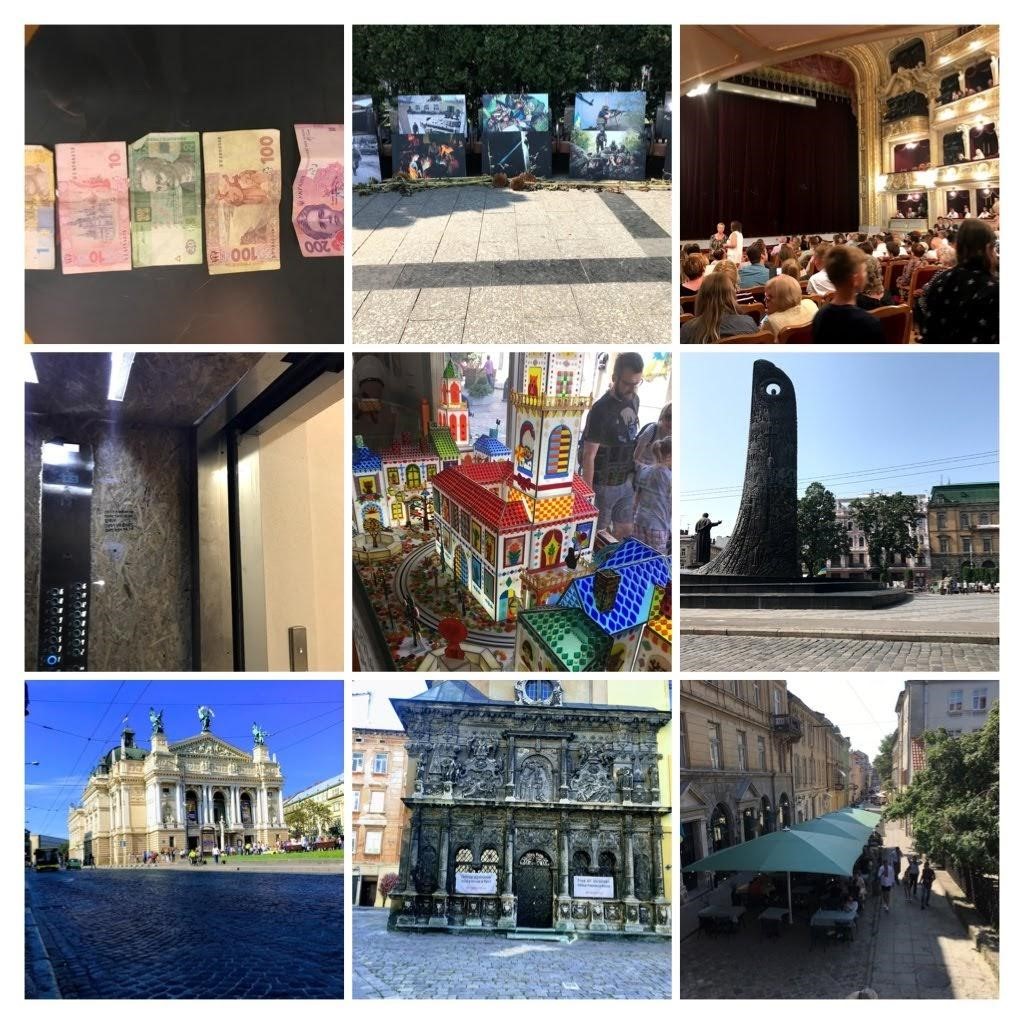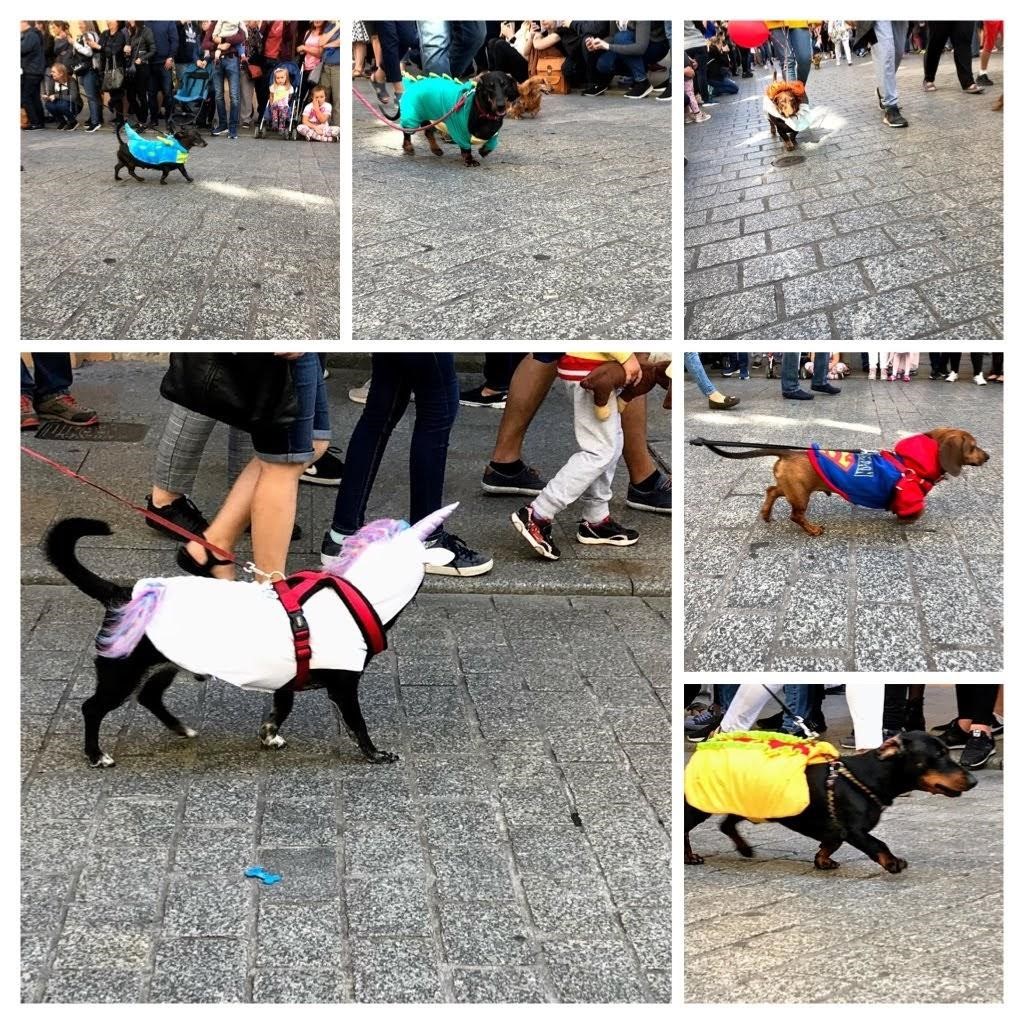Global T1D with Jamie – Fall 2019
Jamie Kurtzig was diagnosed with type 1 diabetes (T1D) at the age of 19 months. Now 15, she has been writing about her experiences on a blog series since 2017, first as “Diary of an Artificial Pancreas” and most recently under the title “Looping with Jamie”. Her family will be living in the Ukraine and India over the next year and will be JDRF Global Advocates during this time. Jamie will continue to write her blog from abroad.
By Jamie Kurtzig
Only half of all people living with T1D know about their T1D in India, and their T1D ruins many of their chances in marriage, work, overall enjoyment, and health. So, what can we do about this? The Kurtzig family will be embarking for a year in India and Ukraine to lessen the social stigma surrounding T1D and make sure that people outside of the U.S. are able to benefit from current T1D technology. We know that technology is improving a lot in the US with closed-loop systems and continuous glucose monitors, but only a fraction of those living with T1D can benefit from these advances. Help us spread the technology and social acceptance of T1D to other countries like Ukraine and India!
August 2019
Today, I am flying to Lviv, Ukraine! I am so excited to start this new, year-long adventure with my family. I am really nervous about staying in touch with my friends and making new ones, but I think this is simply an opportunity too good to pass up. This is what I have to keep reminding myself of while lugging tons of my baggage around airports for 2 days of traveling! I have one suitcase with all of my clothes, another suitcase full of all of my chemistry lab equipment, a bag of all of my medical equipment, a bag of things I need for the plane ride, a bag of gluten-free food, my violin, and my backpack full of textbooks. Too much stuff! We brought 3 months’ worth of Dexcom sensors and Omnipods, a backup transmitter, 3 months’ worth of insulin, and tons of gluten-free food since there is little availability in Ukraine, a wheat-loving country. Their blue and yellow flag even symbolizes the sky and the fields of wheat below. Thank goodness our doctor note worked well and none of our diabetes, chemistry, or celiac supplies were confiscated at any of the airports that we traveled through today—a victory. Since I am now Looping, I don’t need to worry about changing any times on my equipment.
First impressions: Ukraine is a place rich with history, but the Ukrainian people have never had much freedom. They have been constantly controlled by Slavic tribes, the USSR, Poland, Nazi Germany, and Russia. Because of this, their unique national culture is still developing. There is also this negotiation between new and old since Lviv was founded in 1256, but Ukraine only got its independence in 1991—only 13 years before I was born!
Ukraine’s former president was Petro Poroshenko, the leader of a chocolate company named Roshen (after him). He ran for reelection this spring but lost to Zelensky, a comedian and actor who actually played the president in one of his television shows! Zelensky won in almost all of Ukraine except for Lviv (where I am living) and a city called Ternopil (where I visited!). I know that Zelensky and Ukraine’s involvement in Trump’s impeachment has made top headlines in the US for several months, but it is honestly not a big deal here. Ukraine is much more concerned with its war with Russia in the east, and Ukrainians think that this is just posturing and typical politics in the US. Ukraine is in a super tricky situation right now since many Ukrainians or especially Western Ukrainians want to get into the European Union, but they can’t because Russia is warring with them and creating instability. Putin wants to keep control over Ukraine, so I am afraid this war will last for a long time.
Left to right, top to bottom: Ukrainian money is called a hryvnia, and 25 of them are worth one dollar (notice the physical size difference based on the value of the bill); pictures from Ukraine’s war with Russia; inside Lviv’s beautiful opera house (we saw Swan Lake and The Nutcracker); notice the cardboard wall inside of an elevator while apartment searching; candy making is popular here; the Shevchenko Monument showing Ukraine’s history through its carvings; the outside of Lviv’s opera house; an old church (Ukraine has many) advocating for why Russia should free a Ukrainian journalist; a beautiful Ukrainian street.
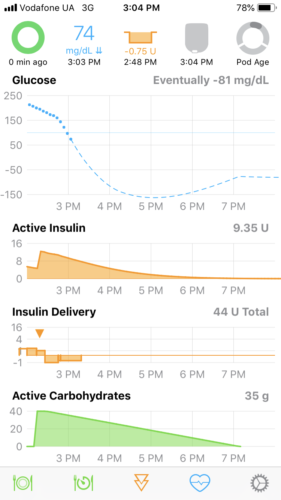
While I was walking to a violin lesson one day, I looked at my phone and saw that I had almost 10 units of active insulin! I had been needing a lot more insulin than normal earlier that week, so I had been needing to be aggressive with my bolusing. But this time, I guess I was too aggressive. I sent the screenshot below to my mom, and I started freaking out. I ate about 3 glucose tabs, multiple shot blocks, and a bar. I noticed that I was starting to run out of low supplies from my backpack. I continued walking to my lesson, and when I arrived, I explained my situation. Roman actually gave me condensed milk to eat by the spoonful! I called my mom to come over, and I needed to sit down. I never actually went that low, but my system was so out of whack that I couldn’t do the lesson. After that, I became super scared about going low, and I would under bolus, making my blood sugar numbers go high for the next few days.
T1D and celiac in Ukraine: In general, my blood sugar numbers were not as good in Ukraine as they are in California. I think this is because I am eating foods that I am not used to eating. In California, I am used to eating lots of fruits and vegetables, and here, I am eating mostly meat, dairy, potatoes, banosh (Ukrainian dish made of cornmeal), sushi (the sushi is surprisingly better than in California even though Ukraine isn’t next to an ocean), and chocolate (Lviv is famous for chocolate). Eating this way has caused my blood sugar numbers to run higher than normal. There is not much gluten-free packaged food here (crackers, bread, tortillas, etc), and not many people actually know what gluten is. In a grocery store, there is this tiny gluten-free section with about 5 things in it. Every time a family member flew over to visit us, we would ask them to bring a whole suitcase of gluten-free food to us since there is no Amazon delivery here!
Poland: My family and I are taking a vacation from our vacation and going to Krakow, Poland! It was a 7-hour wait time at border control, not even including drive time. They made me unpack my diabetes supplies, but they did not take anything.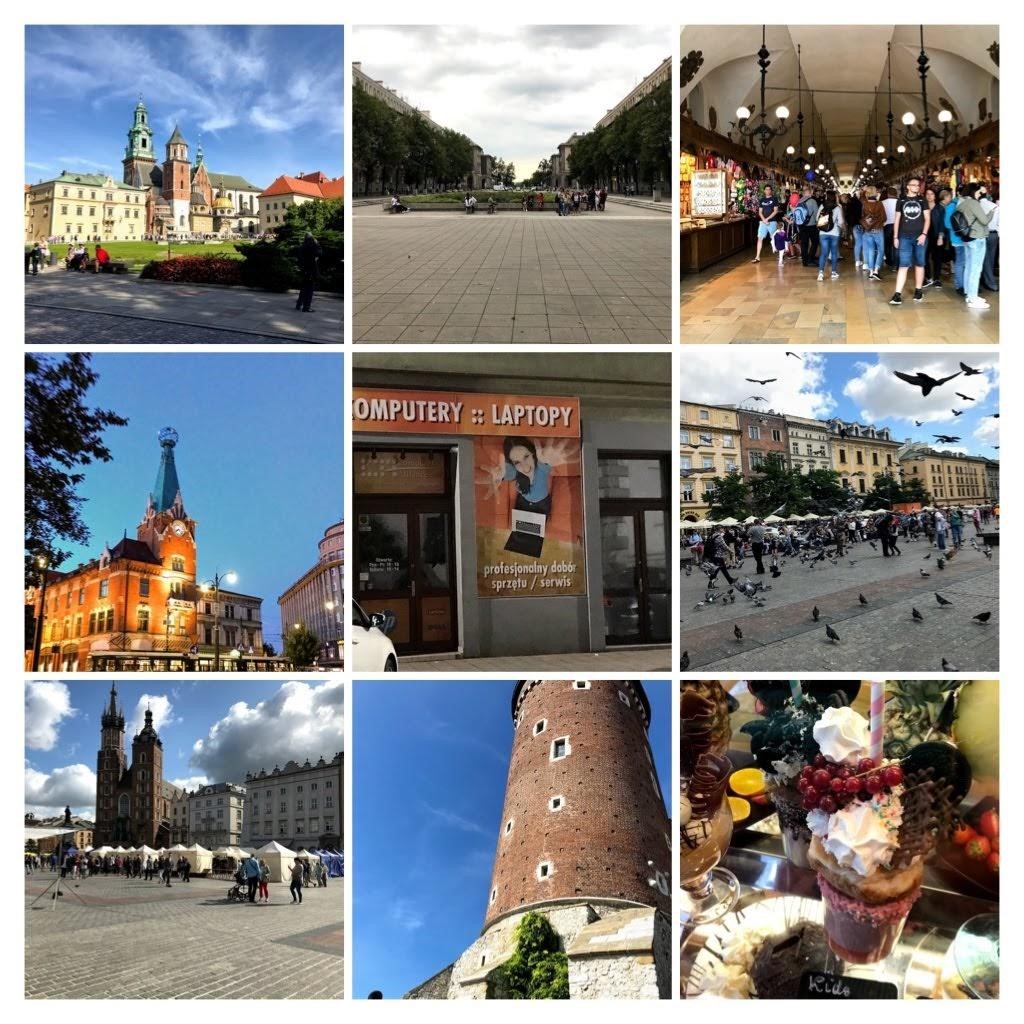
Left to right, top to bottom: Wawel Royal Castle; Nowa Huta, an old, planned, communist community from Stalin’s time; Cloth Hall, the world’s oldest shopping center; beautiful European architecture; I wonder what that sign says 😁; Krakow’s main square; markets in town square; Wawel Royal Castle’s tower; a crazy ice cream sundae I saw!
While In Krakow, my family and I went to the annual wiener dog parade. It was definitely a highlight of the trip, and I could not stop laughing the whole time! The parade was about an hour with hundreds of wiener dogs. Here are some of my favorite dogs. Now I want a wiener dog! Can they be taught to sniff blood sugars?
November 13: As part of this trip, I also wanted to help people with type 1 diabetes here in Ukraine. I met with an endocrinologist here in Lviv named is Dr. Ihor Hrytsiuk who works at the Western Ukraine Specialized Children’s Medical Center. I absolutely loved meeting with him. Here are some notes from our meeting:
- 12 of his 200 patients use pumps, but more patients want it. They are not very accessible to people because they are not covered by the government. The only pump company here is Medtronic.
- CGMs are also not funded by the government, and so not many people can use them. The FreeStyle Libre is the most popular, but there is also Dexcom.
- There is no Humalog here. There is only Sanofi Lantus and Novolog. Insulin is funded by the government. The government also pays for insulin pens and some test strips.
- There are no closed-loop system users here. I was the first person he had ever met who used a closed-loop system.
- About 1 in 400 people have type 1 diabetes here, but it is on the rise. He used to get about 2 new diagnoses a month, and now it is 2 a week.
- At this hospital, they have 4 training sessions:
- Type 1 diabetes in general
- Nutrition and how to calculate carbs (called “bread units” here)
- How to calculate the right amount of insulin to give
- How to change insulin doses
- An in-range blood sugar is 72-180 mg/dL. Since they use the metric system here, it is the same as 4-10 mmol/L.
- Many people experience hypoglycemia at night here. In the first year of diagnosis, people typically have 6.5-7.0 A1Cs because of their honeymoon period, but this gets worse later on. People usually have A1Cs of 7.5-9.0 after their honeymoon period. The worst years of blood sugar time-in-range are the teenage years. Some teens lie about taking their insulin. This seems to be similar worldwide.
- We got to meet the family of a newly-diagnosed child who was in the hospital. It was so interesting to me how they said (in Ukrainian, but Dr. Hrytsiuk, who speaks English, translated this for us) that they thought their grandson’s diagnosis was because they had done something wrong. They mentioned something about how their stress caused this condition in their grandson. Since most people don’t know that much about this condition, they think that their behavior caused it, not their pancreas.
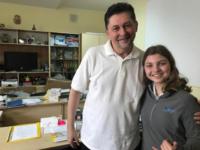
We are brainstorming specific ways to help Dr. Hrytsiuk and his patients. I will keep you posted on what we come up with in case you want to help.
Closing remarks: I know my trip to Ukraine is ending, but I am so thankful for this incredible opportunity. I will never forget this trip. I ended the trip with a laugh and a beautiful view (see the pictures).
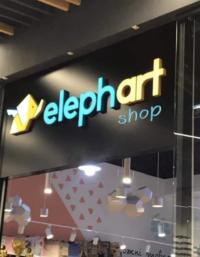
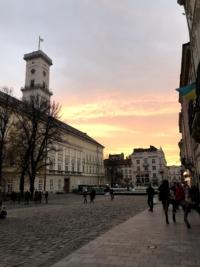 The first picture shows a translation gone awry! While I have been here, I have taken photos of all of the strange translations I have found, but this one is my favorite. The second picture was taken on our last night in Lviv’s city center.
The first picture shows a translation gone awry! While I have been here, I have taken photos of all of the strange translations I have found, but this one is my favorite. The second picture was taken on our last night in Lviv’s city center.
Late November: We are home. Back in the US after 90 days of travel. My type 1 diabetes management has been normal here, and my jet lag has not been so bad. We came home so that we wouldn’t miss one of my favorite holidays—Thanksgiving with my family.
Lastly, don’t forget to come to my book launch! I am publishing my first collection of poems called Onederland: My Childhood with Type 1 Diabetes, and it is launching at Book Passage in Corte Madera on December 15 from 4 to 6 PM. The event is free, and there will be drinks and hors d’oeuvres for you. I will explain the book’s story and read some of my poems. Please join me at my book launch! Book Passage Event Launch Page I hope I can see you there! Amazon page, Barnes and Noble Page
Here is a summary of the book:
My poetry book, Onederland, is a collection of 100 poems I have written throughout my life (from kindergarten to high school). The poems cover topics ranging from Type 1 diabetes to sunsets to worn-out shoes. By purchasing a copy and looking at the world through my eyes, you will be supporting Type 1 diabetes non-profits and their groundbreaking work toward finding a cure and improving the lives of millions of children and people, like me, who live with Type 1 diabetes. I have been living with Type 1 diabetes since I was one year old, and it is my dream to be a part of finding the cure.
